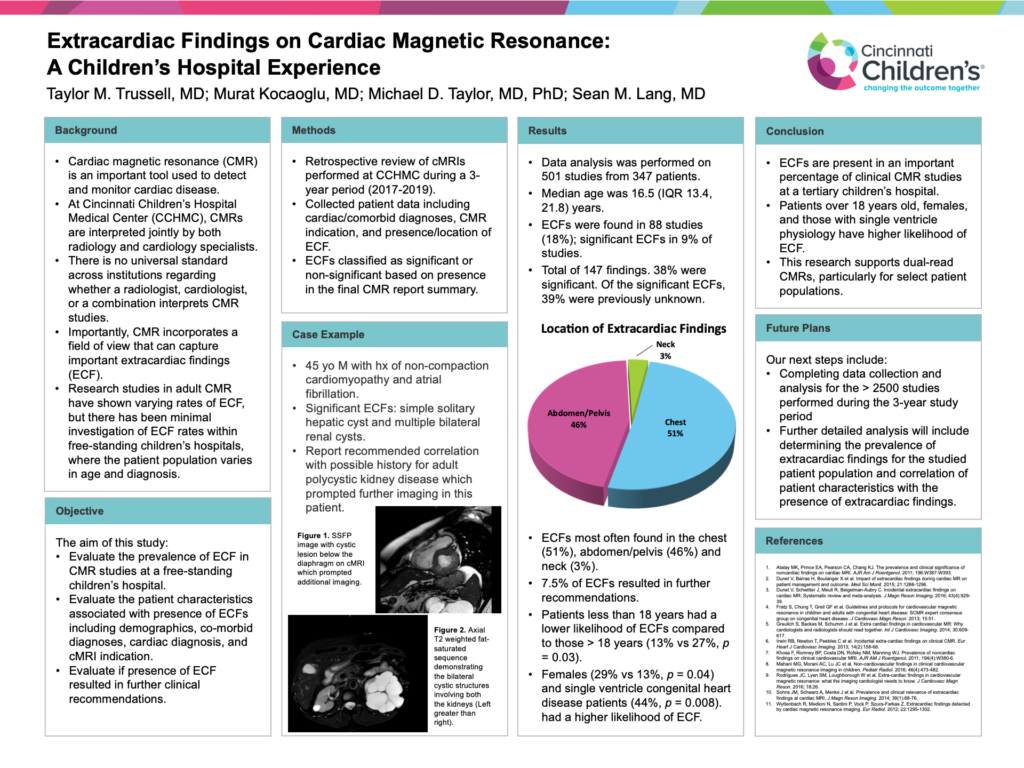Extracardiac Findings on Cardiac Magnetic Resonance: A Children’s Hospital Experience
Taylor M. Trussell, MD; Murat Kocaoglu, MD; Michael D. Taylor, MD, PhD; Sean M. Lang, MD

Incidental findings on cardiac MRI have the potential to influence patient care and support the importance of dual radiology and cardiology interpretation especially in at-risk populations.
-Taylor Trussell, MD
Abstract
Background: Cardiac magnetic resonance (CMR) is an important tool used to detect and monitor cardiac disease. At Cincinnati Children’s Hospital Medical Center (CCHMC), CMRs are interpreted jointly by both radiology and cardiology specialists. There is no universal standard across institutions regarding whether a radiologist, cardiologist, or a combination interprets CMR studies. Importantly, CMR incorporates a field of view that can capture important extracardiac findings (ECF). Research studies in adult CMR have shown varying rates of ECF, but there has been minimal investigation of ECF rates within free-standing children’s hospitals, where the patient population varies in age and diagnosis.
Objective: The aim of this study is to evaluate the prevalence of ECF in CMR studies and associated patient characteristics at a free-standing children’s hospital.
Methods: This is a retrospective review of CMR studies performed at CCHMC during a 3-year period from 2017-2019. Patient data included cardiac and comorbid diagnoses, CMR indication, cardiac function measurements, and the presence/location of ECF. ECFs were classified as significant or non- significant based on appearance in the final CMR report summary.
Results: Data analysis was performed on 501 studies from 347 patients. Median age was 16.5 (IQR 13.4, 21.8) years. ECFs were found in 88 studies (18%) with significant ECFs in 9% of studies. Overall, a total of 147 findings were documented of which 38% were significant. Of the significant ECFs, 39% were previously unknown. ECFs were most often found in the chest (51%), abdomen/pelvis (46%) and neck (3%). 7.5% of ECFs resulted in further recommendations. Patients less than 18 years had a lower likelihood of ECFs compared to those > 18 years (13% vs 27%, p = 0.03). Females (29% vs 13%, p = 0.04) and single ventricle congenital heart disease patients (44%, p = 0.008). had a higher likelihood of ECF.
Conclusions: ECFs are present in an important percentage of clinical CMR studies performed at a tertiary children’s hospital. This is particularly true in patients over 18 years old, and those with single ventricle physiology. Overall, this research supports dual-read CMRs, particularly for select patient populations.